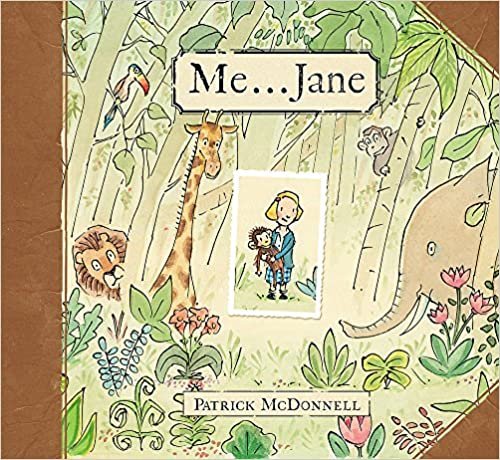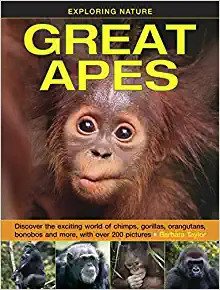An-Animal-a-Month: Chimpanzees
Take a swing through the trees with chimpanzees and their champion, Jane Goodall!
Find out what it’s like to study chimpanzees! Primatologist, Dr. Pruetz, takes the reader along as she asks and answers questions about the lives of chimps on the Senegal savannah. As she describes her research and daily life observing the animals, she also weaves in facts about the chimps and shows children how they can start on the path to studying animals. Close-up, captivating photographs and engaging page layouts help make this book stand out. Ages 4-8.
Kind of nonfiction: Narrative (relates an experience) with expository elements, such as a question and answer structure, woven in. It’s written from the first-person point of view with informative photo captions, page numbers, and a glossary. (My categorization using Melissa Stewart’s 5 Kinds of Nonfiction.
Ties to Next Generation Science Standards:
K-LS1-1 (what animals and plants need to survive) – Turn to pages 20-21 to see the things Dr. Pruetz needs to survive in the Fongoli savannah, including snake chaps to prevent bites, water, snacks, GPS, and a first aid kit. Children will see that her needs overlap those of the chimps. They also need to stay safe from predators (pages 14-15) and find food (pages 22-23). Additionally, pages 10-11 show their need for nesting materials, while pages 24-25 show their need to stay cool. Readers can see how Dr. Pruetz’s hut helps provide these needs for her.
K-ESS2-2 (evidence of how animals can change the environment to meet their needs) – Chimpanzees provide a classic example of an animal creating tools from materials in the environment to help with food gathering. Page 24 shows a chimp using a stick to gather termites and tells of how they make spears for hunting too.
So many wonderful biographies of Jane Goodall - it’s hard to choose! Here are two that caught my eye.
This one is part of the series, Ordinary People Change the World. It’s told from Jane’s point of view, and her passion and spunk come through in the voice. It includes fresh anecdotes from her childhood and conveys some of her most important findings about chimpanzees, including their creation and use of tools, their individual personalities, and other ways they are similar to humans. Jane’s conservation work and an invitation to help round out the book. Ages 5-9.
Kind of nonfiction: Narrative – the story of Jane’s life from childhood through the present time, told in the first-person. A note at the end indicates that the author used Dr. Goodall’s own words when possible, so some dialog is invented. This moves the book into the informational fiction category, and children should be aware that not all the words are her own. However, the dialog feels in keeping with her voice, and she endorsed the book. Students could discuss the merits and detractions of using invented dialog. (My categorization using Melissa Stewart’s 5 Kinds of Nonfiction.)
Tender and beautifully rendered for the youngest listeners and readers! Author and illustrator Patrick McDonnell weaves Jane’s childhood notes and drawings, along with poignant photographs, into this biography that shows children how dreams can come true. It’s an older title, from 2011, but feels timeless and will inspire children to learn more about Jane and chimpanzees. Ages 1-8.
Kind of nonfiction: Narrative, telling the story of Jane’s life with a focus on her early childhood and her dreams. More information and a note from Jane are included as back matter. (My categorization using Melissa Stewart’s 5 Kinds of Nonfiction.)
Really get to know our closest living relatives! While I found many books with the most basic information about chimpanzees, I didn’t find many with in-depth information. By contrast, this title delivers detailed spreads about everything including chimp anatomy, adaptations, diet, locomotion, intellect, social lives, communication, birth, threats, and conservation. It brims with dynamic, eye-catching photographs and diagrams. The 64-pages also cover the other great apes, and end with a glossary and index. Ages 8-12. (I wasn’t able to borrow this one through my local library system. If you can’t borrow it, perhaps look for a used copy or splurge on a new one – it’s worth it! It’s also an older title, 2015.)
Kind of nonfiction: Browsable, meaning you can open to any page and start reading. Great resource for research and reports. (My categorization using Melissa Stewart’s 5 Kinds of Nonfiction.)




